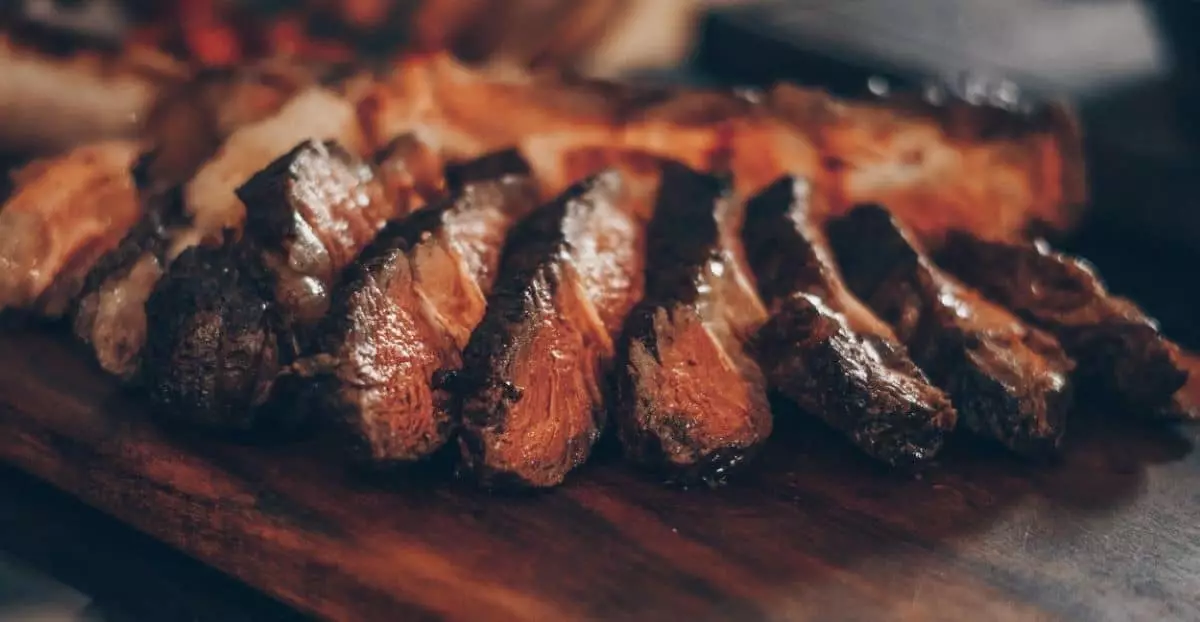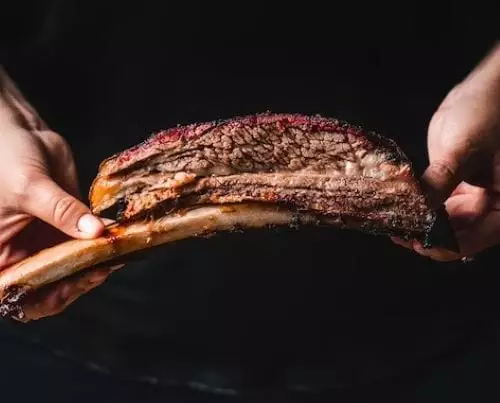
Thermochemical Reactions in Meat: Why a Thermometer is Crucial for Taste and Texture
Cooking is an art form that requires precision and attention to detail. The right temperature and timing can impact the taste and texture of your food. That’s where a thermometer comes in. Whether you’re a home cook or a professional chef, you need this tool in the kitchen. A thermometer helps you achieve the perfect taste and texture, impacting your food experience.
This guide discusses the importance of using a thermometer to enhance your enjoyment of food.
Table of Contents
Temperature Control in Cooking
Temperature control is vital in cooking. Food can be undercooked or overcooked if you don’t get the temperature right. For example, undercooking meat could result in raw meat that is potentially dangerous for humans to consume. On the other hand, if you overcook the meat, it could be tough and dry when eating. Proper temperature control ensures that the food is cooked to perfection in terms of taste and texture.
For example, if you are cooking steak, you need to cook it enough at the right temperature to kill the harmful bacteria in the meat. The right temperature when cooking steak also means you can enjoy a juicy and tender piece of meat.
Consistency in Cooking
Consistency is another crucial element in cooking. It is beneficial when cooking for a large group of people. You must cook the food at the right temperature for consistent taste and texture.
For instance, if you are cooking a large piece of ham or turkey, getting the cooking right without using any tools can be challenging. A large piece of meat can take a while to cook. Plus, it could result in uneven cooking wherein the outside of the meat is overcooked while the inside is still raw.
A thermometer is the best way to ensure the food is cooked throughout. You can insert the thermometer to check the internal temperature of the different parts of the meat. That’s how you can guarantee that you can get the same taste and texture in every part of the meat.

How Temperature Affects Taste
As mentioned earlier, temperature affects the taste of food. The tongue consists of taste buds that are sensitive to temperature. Therefore, different temperatures can affect how you perceive taste.
For instance, cold foods tend to have a milder flavor because the low temperature reduces the intensity of the response of the taste buds. This explains why most people prefer to drink coffee or tea while it’s hot because the flavor is more intense than when it is cold. In addition, the heat improves the aroma of the beverage, and aroma is a crucial part of flavor. Cold drinks taste less sweet since the taste receptors are less responsive at lower temperatures.
Meanwhile, hot foods have more intense flavors. The presence of heat activates the taste receptors on your tongue, which makes them more receptive to taste. For this reason, hot and spicy foods taste more intense because the sensation on your tongue can amp up the flavor.
If you want to enhance the flavor of your food, you must learn how to control and monitor the temperature of food. For example, a thermometer can improve your cooking to achieve your desired temperature for optimal taste.
How Temperature Affects Texture
Aside from taste, the temperature can also affect the texture of food. Cooking meat at the right temperature ensures it is juicy, tender, and flavorful. On the other hand, cooking at the wrong temperature results in tough, dry, and flavorless meat.
Heat causes the proteins in the meat to denature and coagulate. This process results in a change in meat texture. For example, the heat causes the protein fibers to shrink and tighten if you cook meat. The process results in a firmer texture on the meat. But when the meat is overcooked, those fibers contract, making your meat tough and chewy. If meat is not cooked enough, the proteins will not coagulate, resulting in a mushy and unappetizing texture.
The impact of temperature on texture is not only applicable to meat. It can also have the same effect when cooking vegetables. Therefore, you must identify the ideal temperature to achieve the best texture for your food.

How to Cook the Perfect Steak Using a Meat Thermometer
Cooking steak can be challenging. So many things could go wrong, so you must know how to manipulate temperature to achieve the most delicious, tender, and juicy steak. Here are some tips on using a meat thermometer for cooking the perfect steak.
- Pick the right cut of meat. Every cut of steak is different and requires different approaches to cooking. However, the meat must be at room temperature before cooking.
- Get the temperature right before cooking. Whether cooking your steak in the oven or stovetop, ensure you reach the desired temperature before cooking the meat.
- Sear the steak. If you cook the steak in the oven, always sear the meat on the stovetop first. Sear on each side for two to three minutes. It will help to seal the juices and flavor of the steak.
- Monitor the internal temperature. Use a thermometer to ensure you reach the desired internal temperature for the cut of steak for maximum flavor and texture. For example, the internal temperature for a medium-rare steak is 54-57 degrees Celsius. For a medium steak, it should be 60-63 degrees C. For a well-done steak, the internal temperature is 71 degrees C. Refer to the USDA guidelines on meat temperature to ensure your safety when cooking meats like steak.
- Let it rest. Once your steak has reached the desired internal temperature, remove it from the oven or the stove. Let it rest to allow the juices to redistribute.
Conclusion
A thermometer is the most crucial kitchen accessory if you want to perfect the taste and texture of your food. You can enjoy your meal by ensuring you have the optimal taste and texture! It also provides consistent cooking results every single time.
Discover Other ChefsTemp Products
Discover more recipes and learn kitchen tricks by joining our cooking family on Facebook.
You may also like:















